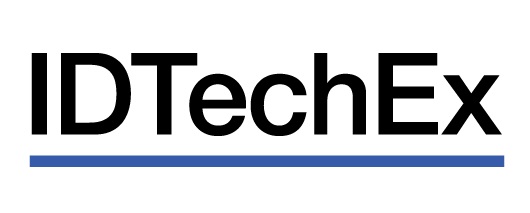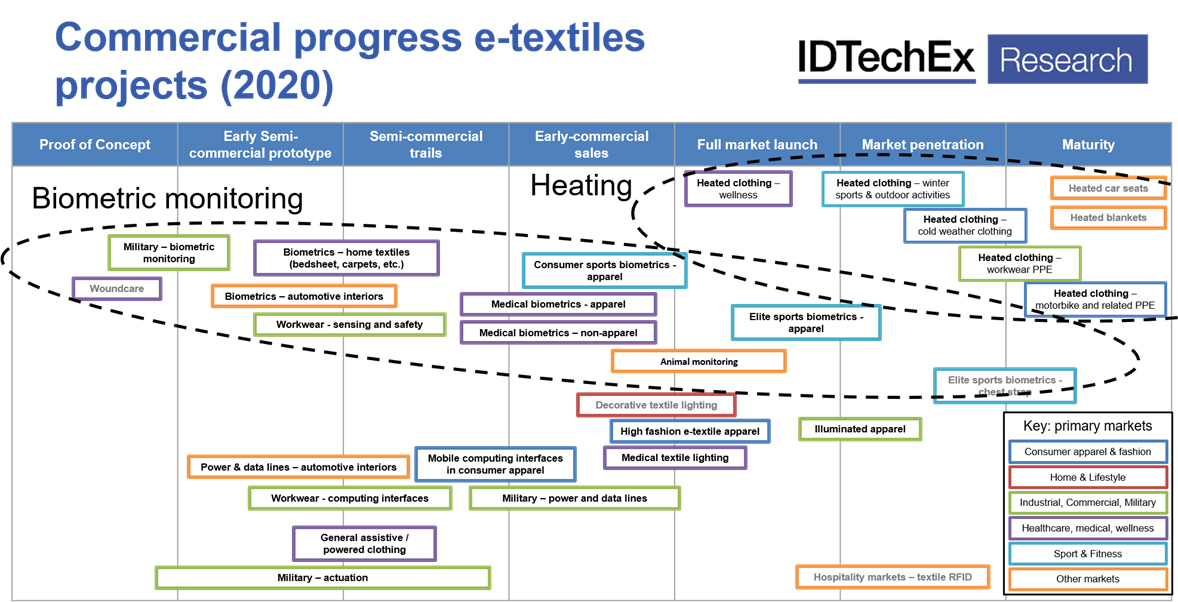
Updating the e-Textiles Mantra: An Analyst's Commentary
CAMBRIDGE, UK / AGILITYPR.NEWS / June 16, 2020 / E-textiles is an area of technology which aims to combine electronics and textiles, bringing the functionality and connectivity of electronics to the form factor, comfort and ubiquity of textiles. Examples of this design principal stretch back over many decades, but a more concerted effort to commercialise this technology has occurred over the past 25 years. In 2020, hundreds of companies are actively involved in the development and commercialisation of e-textiles. Part of my role as an analyst has been to report on this progress, as well as being involved in discussions about how to help the industry move forward.
As e-textiles is a relatively niche area, albeit a growing one, many companies continue to follow a simple formula when presenting their work at conferences or during webinars. Companies will define the term ‘e-textiles’ and go on to explain the principles behind the name. This allows for a natural and smooth progression into an easy sales pitch which focuses on the benefits of combining electronics and textiles. This is typified in the first sentence of this article, describing how "bulky" and "rigid" electronics are made "comfortable" and "wearable"; "passive" and "dumb" textiles are made "smart" and "functional". It is a very marketable mantra, regularly repeated by companies, analysts and commentators alike. However, this mantra is increasingly unhelpful, over-generalising and misrepresenting what makes an e-textile product successful.
The challenge with this approach is that it downplays the capabilities of the competition and misses some important factors which are much more fundamental to the success of products. Of the $70bn wearable electronics market today, only around $0.5bn comes from e-textile based products. Just because a product includes textiles does not mean that it is necessarily more comfortable or wearable than a traditional option, such as a watch or patch. Similarly, having more advanced technology does not always result in a more successful product, with additional complexity and cost not necessarily resulting in additional value. Presented below are two case studies of common product types within e-textiles. These clearly illustrate how some of the core narratives can be disconnected from the market reality.
The most successful market in e-textiles is heated garments in which resistive heating is used to warm the wearer. Active heating can deliver rapid, location-specific warming on demand in a way that is not possible via exclusively passive techniques. The majority of sales in this area are in bulky outdoor apparel and protective equipment, such as motorcycle gear and PPE. There are also consumer and sports applications including both outerwear and base layers, and emerging applications where heating can be used for medical or wellness purposes. The technology itself remains fairly simple, using a power source (usually a large battery) to achieve the resistive heating of a heating element (usually carbon fibre or stainless steel microfiber wires) with control elements to prevent overheating. It is mature technology with practical product choices and a simple, effective value proposition. The product margins also work. For example, a typical ex-factory price for a heated jacket is around $80-100 with a retail price of $150-200. These products have been launched by leading industrial companies, luxury and high street fashion brands. international sports organisations and alike. We covered this market in particular detail for the 2020 edition of our report on e-textiles and smart clothing, from which you can see a summary here.
A contrasting case study exists around smart clothing products used for monitoring vital signs and other health metrics. In efforts to grow this market, the core technology including the materials, components and processes used to build these products has become increasingly complicated and diverse. Products have been developed to monitor parameters such as cardiac biopotential (for heart rate, but also other cardiac signals that can be read in an ECG), respiration, motion, position, orientation, muscular activity, temperature, and many others. Many of these technologies have made it through to commercial products targeted at sports, fitness & wellness, medical & healthcare applications, as well as military, industrial or safety applications. These product sectors have consistent presence within the core narrative for e-textiles, often accompanied by optimistic long term visions of democratised access to healthcare and fitness products deployed through the ubiquitous platform of textiles. These narratives have crystallised in the interest, investment, patents and even early historic product launches from some of the largest companies in the world. Despite all of this, our final estimations for total revenue generated from products in this category in 2019 was just 1/10th of that of heated garments. The lesson: more advanced technology does not necessarily lead to a larger market size.

E-textile product types and projects arranged by technology readiness level and primary target market
Source: IDTechEx report E-Textiles and Smart Clothing 2020-2030
Of course, there are more ways in which these two products can be compared and contrasted beyond raw market size. The point about technological maturity is commonly discussed; more established technologies benefit from established supply chains and standards, but newer technology needs to either leverage what has come before or invest to create new options from scratch. Another point centres on the long term visions of these different product types. Smart clothing for biometric monitoring is regularly referenced with almost evangelistic optimism about ubiquity in fitness and healthcare technology, helping to build a fit, healthy society. Whereas, heated clothing presents a much less glamorous, yet certainly more practical short term outlook. A third consideration is around product competition: active heating via e-textiles does compete with other options, including improvements in passive heating in the textiles, as well as other products such as chemical heating or otherwise. Biometric monitoring exists within a significant ecosystem of competitive products, from smartwatches and pedometers, to cardiac skin patches and other wearable medical devices and more, many of which are mature product areas in their own right and thus represent formidable competition. These comparisons increasingly show that whilst "being e-textiles" is a common thread which connects these product types, the differences greatly outweigh the similarities.
This brings us back to the central mantra that e-textiles 'brings the best of electronics and textiles together into a single product'. This definition-turned-sales pitch flows so comfortably that it's popularity is no surprise. I, too, am guilty of this, having co-opted this easy narrative into my earlier work. Over my 5 years covering e-textiles as an analyst and commentator, I have gradually started to tone down and move away from this mantra, to the point where it is now largely retired from our content. Hopefully this is one small step that can help companies in the present and future to focus on the more fundamental challenge: building a product that is right for the customer, regardless of technology.
Afterword:
Of course, e-textiles is more than just heating and biometric monitoring, with vast numbers of applications, technologies and product areas not cited in this short article. Many examples of these are shown on the image above and further detailed in the IDTechEx report. The central "mantra" which I am suggesting be retired remains relatively common, though there are certainly those within the community who have already side-lined this kind of pitch and those who never adopted it in the first place. This diverse e-textiles community contains many hundreds of companies and even more individuals that are innovating, exploring and experimenting with different products, technologies and markets, all involving the combination of textiles and electronics. It is my privilege as an analyst to embed myself within this community and to support it via our market research reports and consulting services. For more information about these services, please visit the report page www.IDTechEx.com/eTextiles or contact us at research@IDTechEx.com.
Contacts